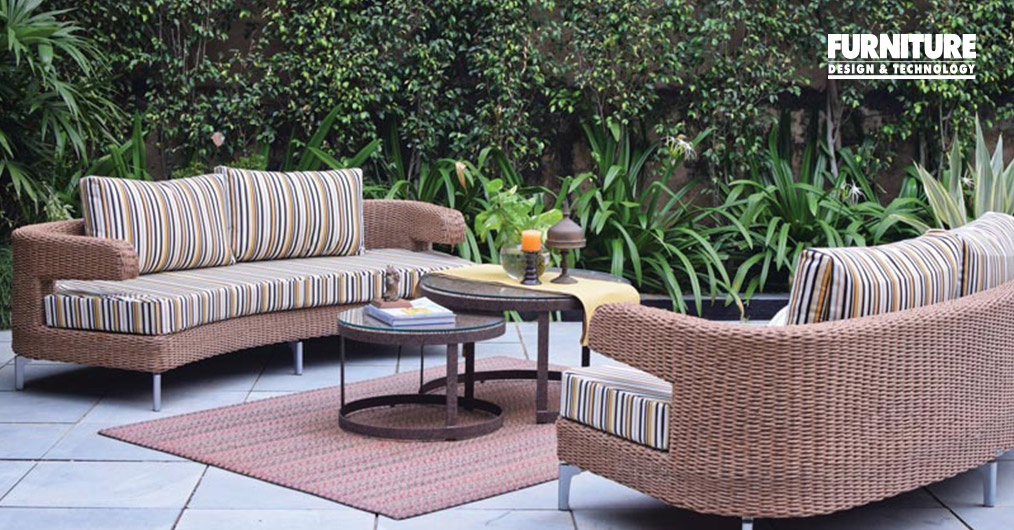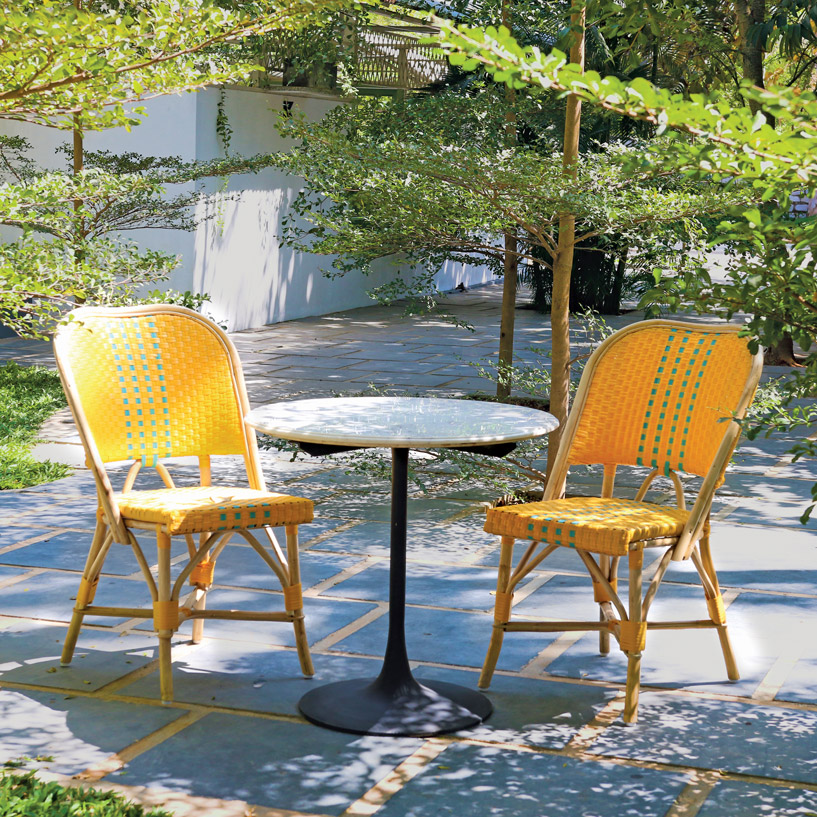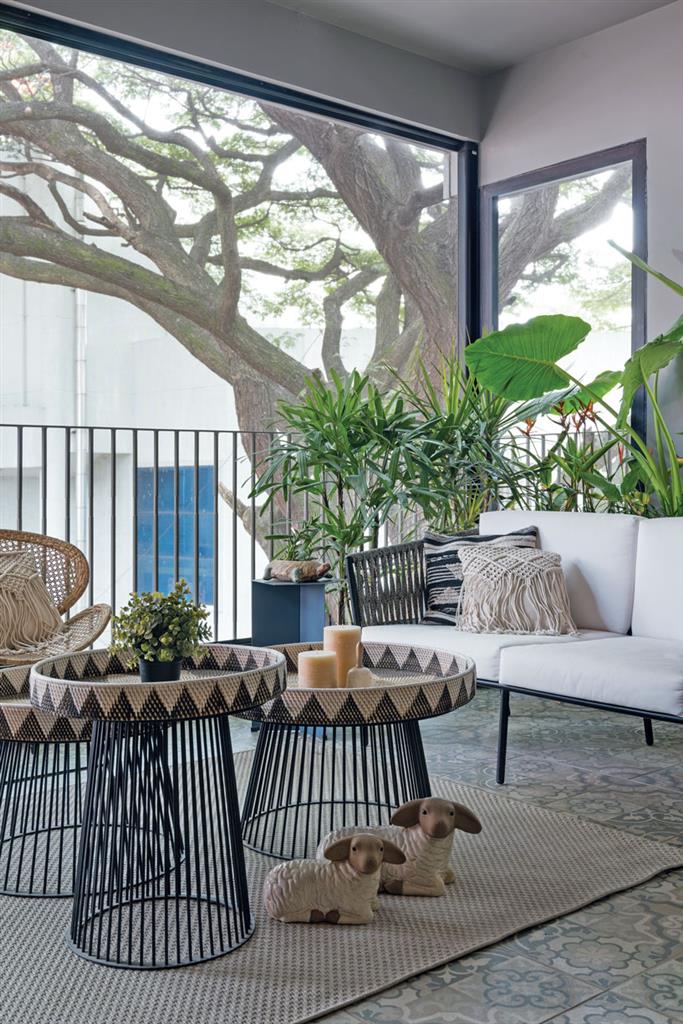
The purpose of outdoor furniture is to bring comfort and pleasure to balcony spaces. Outdoor furniture needs to be designed to withstand any climatic conditions, offer multi-functional purposes and require low maintenance, thus creating an additional charm to the outdoor spaces. Durability and quality are, therefore, two core components of outdoor furniture. It’s imperative to use waterproof material, sunlight and dust resilience. Additionally, upholstery manufacturers are shifting their focus toward lightweight, environmentally-friendly and durable materials.
Outdoor material and design options
 Image credit: Home Canvas
Image credit: Home CanvasOutdoor furniture has come a long way in terms of design, moving away from chunky outdoor pieces and plastic weaves that felt cold, synthetic and uncomfortable. According to Marian Kumar, Associate Architect, Studio Taan (Bengaluru), “One of the big trends we have noticed and use in our designs as well is the new design language of outdoor furniture, now using much sleeker frames, more natural materials, whether its natural cane weaving or cotton rope braids, which are much nicer to the touch and a lot more comfortable as well.”
Outdoor furniture is observing a major shift in textures, materials, and fabrics with a greater emphasis on using wood, aluminium, all-weather fabrics, resin and HDPE. “Teak having superior natural all-weather capabilities and providing incomparable durability if cared for properly, aged teak is by far the most popular choice for outdoor furniture,” highlights Basoya. He also emphasized on other advanced materials such as Shorea (reddish-gold Southeast Asian material that is stronger and heavier than teak), eucalyptus, wrought iron, aluminium, stainless steel, resin and plastic. “Natural materials are increasingly being used, with more sustainable design taking the forefront, while also looking at how this can be adapted holistically on a long-term basis,” adds Ar Kumar.
Manufacturers are now focused on launching innovative and technologically effective solutions to these advanced materials. Sahiba Madan, Founder and Principal Architect, Insitu Design Studio (Mumbai) says, “We have seen interesting forms being explored in outdoor furniture using parametric technology to create versatile formats of seating and other activities.” New raw materials have been introduced which can be bent and are light. “Basic raw materials have undergone a tremendous change. At our end, we try and incorporate any materials that can withstand the extreme temperatures and use them in designs so that it is a design and technology combination together,” informs Punam Kalra, Interior Designer and Creative Director, I'M, The Centre for Applied Arts (New Delhi).
 Image credit: Studio Taan
Image credit: Studio TaanConsumers often prefer wooden outdoor furniture, where cane wood is specifically gaining more traction in the outdoor furniture market on account of its lightweight, easy-to-maintain, design and features. However, plastic and metal furniture are also in demand and expected to grow in the coming years, cites Mordor Intelligence report. “In terms of functionality and durability, wicker and rattan are the most well-known and popular materials for outdoor furniture. We've recently been using a lot of metal, such as brass and copper to create luxe decor for our clients,” informs Dhvani Shah, Founder and Principal Designer, Dhvani Shah Design Studio (Mumbai).
Manufacturing brands are aiming to provide easy-to-clean, sturdy, yet fashionable designs. With a shift in textures, materials and fabrics, comfort aims to reign supreme. “People love hand-woven cane chairs and Victorian-inspired aluminium and cast iron furniture for their outdoor spaces. One of our Rose collections has a rose flower design with a sturdy structure. The seat and backrest are made from aluminium casting and the legs are made from steel casting. The range is powder-coated for superior weather resistance,” explains Sridhar. That being said, cane, aluminium, cast iron and marble are still the best choice.
For Kalra, people don’t want to be restricted to indoors. People want to stylize their balconies and terraces and not restrict them to only drying clothes and any such services. She suggests, “For these terraces, it could be loose furniture, pickable, putable but then if they are looking to make a statement, they could even opt for ledges made out of wood, which double up as a seat or as a table though difficult to move around, unless they are modular. One can also use reclaimed wood for creating ledges/ benches which can work as table as well as seating. If we are looking at sleek designs, we can combine stainless steel with wood.”
This article is a part of our exclusive article ‘Outdoor Furniture’ which is originally published in Furniture Design & Technology (FDT Magazine) April 2023 print issue. If you want to read the full article, please subscribe Furniture Design & Technology Magazine here:
Furniture Design India and the magazine FURNITURE DESIGN & TECHNOLOGY (FDT magazine) are from the trusted 22-year-old media house of SURFACES REPORTER and PLY REPORTER.
FDT is a B2B monthly bilingual magazine from India that shares the pulse of the furniture business in India and connects the manufacturers, OEMS, product designers, architects, showrooms, designers and dealers.
Read More© 2025 Furniture Design and Technologies.. All Rights Reserved. Developed by eyeQ Advertising